- Home
- Sue Grafton
U Is for Undertow Page 6
U Is for Undertow Read online
Page 6
The Polk and the Haines are both crisscross directories that offer a means of discovering and cross-referencing the name, address, and occupation of any individual or business in a given area. Where the target is a business, you can also determine the number of people employed and any relevant sales figures. If, as in my case, all you have is a name, you can usually find the person’s home address. If all you have is an address, you can pick up the name of the occupant. By shifting to the city directory, you can check the list of residents against a second alphabetical listing of street addresses. The house numbers are sequential, providing the name and phone number of the resident at any particular address. While the information is redundant, each category supplies tidbits that can be pieced together to form a quick sketch.
I pulled both the Polk and the Haines for 1966 and then selected three city directories—1965, 1966, and 1967—which I carried to the table. I moved my shoulder bag to the floor and pulled up the chair. From the depths of my bag, I removed a notebook and a ballpoint pen. There was only one family named Kirkendall: Keith (CPA) and Margie (grphic dsgnr) at 625 Ramona Road. I made a note of the address and added the names and the house numbers of the neighbors on each side. In Horton Ravine, the properties range from three- to ten-acre parcels, with some larger ones as well. There are no sidewalks and the houses are set back from the road. I couldn’t picture visits back and forth between neighbors or idle gossip across a side-yard fence. I’d never seen anyone seated on the porches visible from the road. My guess was that people were more likely to get acquainted by way of church, the country club, or the numerous civic organizations around town.
While I was doing a paper search, I looked for Michael Sutton’s former address on Via Ynez. I copied the house number in my notebook and then switched over to the Polk, where I picked up the old phone number. In 1967, when Mary Claire Fitzhugh was kidnapped, her family lived on Via Dulcinea. Again, in the interest of being thorough, I found the names of the neighbors on each side. After a twenty-one-year gap, much of the information I’d gleaned would be out of date, but having the names on hand might save me a return trip. I checked the most recent telephone book and made a note of the one listing that was still good.
I replaced the various directories and went downstairs to the periodicals department. At the back desk, I asked the librarian for microfilm copies of the Santa Teresa Dispatch, covering the stretch of dates that encompassed the Mary Claire Fitzhugh kidnapping. I wanted to review the news coverage of the crime before I did anything else. Sutton had sketched in certain significant points, but his prime focus was the time frame and mine was the bigger picture, including details he might have missed.
The librarian returned with two boxed rolls of microfilm, dated July 1-31, 1967, and August 1-31, 1967. I took a seat at a nearby table, flipped on the microfilm reader, threaded the reel under the glass plate, and caught the end piece on the roller. I pressed the button and watched news pages whiz by at a rate that made me dizzy. I paused now and then to check the date line at the top of the page and when I neared the 19th of July, I slowed and began to look in earnest.
The kidnapping garnered front-page headlines for the first time on Sunday, July 23, and occupied center stage for the following ten days, though the account in each edition was much the same. It was clear the FBI had kept a tight rein on the information released to the public, which forced the reporters into endless repetitions of the same few facts. The basics were much as Sutton had related, though I picked up several details he hadn’t mentioned. Mary Claire vanished on Wednesday morning, July 19, though the crime wasn’t reported until four days later. In that interval, which included the whole of Friday and much of Saturday, the police and the FBI had stepped in and put a lock on the case, ensuring that no whisper of the crime reached the public. Events leading up to the abduction were spelled out, but there was little information from that point on.
I started taking notes, in part to distract myself from the specifics of what went down. Even in the flat who, what, where, when, and how of journalism, the story made something in my chest squeeze down. What made the sensation worse was the black-and-white photograph of Mary Claire that appeared with every article. Her gaze was so direct I felt I was looking into her soul. Her smile was sunny, her eyes shaded by pale bangs. The rest of her hair was held back on each side with a plastic barrette. The dress she wore had ruffles down the front, tiny pearl buttons, and puffed sleeves over arms plump enough to kiss. The photographer had given her a stuffed bunny to hold so the occasion might have been Easter of that year.
I remembered reading about her disappearance at the time, but I hadn’t understood the enormity of the crime. What had she ever done to warrant the evil that must have been inflicted on her? I knew without having met the Fitzhughs that they’d doted on her, laughed at her unexpected comments, hugged her when injury or disappointment made her burst into tears. I shifted my focus, blotting out the sight of her face. Then I looked again. This was as much of her as I’d ever know, and there was no way to shield myself from the knowledge that she was gone. Her parents would never have peace of mind, even if her ultimate whereabouts were discovered. In some ways, I wasn’t sure what difference it would make. She was lost to them, the length and breadth of her life consigned to a few short years, beginning, middle, and end.
I forced myself to scrutinize the account of what happened that day. It all sounded so ordinary. The events leading up to her vanishing carried no hint of the horror to come. Mary Claire had been playing on the swing set in the Fitzhughs’ backyard while her mother sat on the back porch reading a book. The only sound on that summer day was the stutter of a leaf blower on the property next door. A landscape company had dropped off a one-man crew. She hadn’t actually seen him arrive, but she could hear him working his way up the drive, clearing the pavement of grass clippings from the lawn he’d mowed. The phone rang. Mrs. Fitzhugh set her book aside and went into the kitchen, where she picked up the handset mounted on the wall near the door to the dining room. The location of the phone prevented her from maintaining visual contact with the child, but the entire yard was fenced and there was no reason to think she was at risk.
The caller introduced himself, claiming he was a sales representative, conducting a brief survey. Mrs. Fitzhugh agreed to answer a few questions. Later she had no recollection of the caller’s name or the name of his company. He hadn’t identified the product he was promoting, but his questions were focused on the number of television sets in the house, the number of hours they were turned on, and the family’s program preferences. In all, no more than four minutes elapsed between the time she took the call and the moment the salesman thanked her and disengaged.
When she returned to the porch, she noticed Mary Claire was no longer on the swing. She scanned the yard—sandbox, playhouse, shallow plastic wading pool—but Mary Claire wasn’t visible anywhere. Puzzled, but not alarmed, Mrs. Fitzhugh called her name, but received no response. She went back into the house, thinking Mary Claire might have slipped in unseen while her attention was focused on the interview questions. When it became clear Mary Claire wasn’t in the house, her mother returned to the yard and circled the perimeter, checking the shrubbery near the back fence. She peered into the playhouse, which was empty, and then continued around the house. She went through the gate, still calling Mary Claire’s name, more alarmed as every minute passed. Frantic, she ran next door and knocked at the neighbor’s house, but no one was home.
Mrs. Fitzhugh returned to the house, intending to call her husband and then phone the police. As she climbed the back steps, she spotted the note that had apparently been left on the side table and consequently fluttered to the floor. The message was block-printed and brief. The kidnapper said her daughter was safe in his keeping and would be returned unharmed in exchange for twenty-five thousand dollars in cash. If the Fitzhughs made any attempt whatever to contact the police or the FBI, the kidnappers would know and Mary Claire would forfeit her life.
All of this became public knowledge four days after the child had been taken. In the interim, the FBI questioned Mary Claire’s parents, who were white-faced and stunned. After the news broke, neighbors, friends, and acquaintances were interviewed, many of them more than once. The case attracted its share of national attention because it involved the only child of a prominent Santa Teresa couple. After the first splash, however, the coverage became repetitive, which suggested that the FBI had cut off the stream of information to the media. No FBI agent was referred to by name, nor was there any mention of investigators at the local level. The Santa Teresa Police Department’s community relations officer issued a statement from time to time, reassuring the public that the investigation was ongoing and that every effort was being made to identify the suspects and recover the child.
As with any major crime, certain critical details were withheld from the public, leaving investigators a means of weeding out the off-kilter citizen, driven by a need to confess. There was no further reference to suspects or persons of interest, though detectives must have combed the area, talking to pedophiles, registered sex offenders, and anyone else whose criminal history seemed relevant. The FBI received tips, sightings of the child in places all across the country. There were also countless calls reporting suspicious behavior on the part of strangers, who’d done no harm at all and whose actions were innocent. Mary Claire Fitzhugh had been swept into the Inky Void and there was no coming back.
Since that time, the papers had run a version of the same article year after year in hopes that something would break. Other kidnap victims were mentioned, anticipating the possibility that someone might recognize a detail and put it together with other facts previously unknown. If Mary Claire was lost, her plight might provoke a confession in another case. For the child herself, the prospects were bleak and had been once the first twenty-four hours had passed without word. At least I understood now why Michael Sutton had been so anxious to unravel the significance of what he’d seen. For my part, the thought of the child’s fate was enough to make me ill.
6
DEBORAH UNRUH
July 1963
For the next three months, the mother-to-be ate so poorly, she gained fewer than fifteen pounds. Her diet consisted largely of beans and rice—a perfect protein, she proclaimed, completely disregarding her unborn baby’s need for proper nutrition. She didn’t believe in prenatal vitamins, claiming that women since the beginning of time had managed to conceive and bear children without the interference of the pharmaceutical companies. Patrick found her attitudes infuriating, but there was no arguing the point. She interpreted any opposition or rebuttal as an assault on her autonomy. He finally threw his hands up and took to leaving the room the minute she walked in.
Most of the time, she kept a sullen distance, but there were moments when she made a minor effort to get along, thus fostering Deborah’s hopes that a bond could be forged, however limited it might be. Her optimism was always short-lived. Shelly’s mood would darken. The unstable elements in her personality would combine, setting off the inevitable explosion. Once she blew up, Greg stepped into the role of mediator, traveling back and forth between the bus and the house. He made excuses, soothing and mollifying first Shelly and then his parents. Deborah almost preferred Shelly’s hysteria to Greg’s pathetic attempts to broker a peace.
Patrick and Deborah took to eating dinner with friends on Friday nights at the Horton Ravine Country Club. According to the gossip, many couples in their social set were experiencing the same dismay, as their offspring, now young adults, got caught up in “alternative lifestyles,” which meant dope, secondhand clothes, long, unkempt hair, and a neglect of personal hygiene. The nights out were their only relief from the tensions at home and their only opportunity to blow off steam.
They’d known Kip and Annabelle Sutton since they’d joined the country club, shortly after moving to Santa Teresa from Boulder, Colorado. The Unruhs were in their forties, while Kip and Annabelle were ten years younger, with school-age children who took up a major portion of their time and energy. For the Suttons, the Friday-night get-together was a welcome respite from parental responsibilities.
Kip was an architect who specialized in commercial properties—office buildings, banks, department stores. Annabelle was a stay-at-home mom, just as Deborah had been in her day. The Suttons’ four children were two, six, eight, and ten, the oldest a girl named Diana. During the first round of martinis, the subject of Greg and Shelly came up, as it did most Friday nights.
Patrick said, “Take a lesson from us. These kids are malcontents and they’re spoiling for a fight. Our accomplishments are worthless as far as they’re concerned. You two have the same trouble coming up only I’m betting it gets worse.”
Annabelle said, “Don’t say that. I have my hands full coping with the terrible twos. Michael was a doll until his second birthday and now here we are, turning to drink.” She plucked an olive from her martini, popped it in her mouth, and then drained her glass.
Kip said, “I don’t see this business with Greg and Shelly as anything new. Kids have always been rebellious at that age, haven’t they?”
Patrick shook his head. “Not like this.”
“Shelly’s a beatnik,” Deborah said. “She told me she lived for months in a crash pad in North Beach, where all the ‘cool cats’ hung out.”
“A beatnik? That’s passé, isn’t it?”
“Not to hear her tell it. She claims she screwed Allen Ginsberg and Lawrence Ferlinghetti in the same six-day period.”
Annabelle looked askance. “She actually told you?”
“Oh, sure. Proud as Punch. I could see she was hoping I’d recoil in horror so she could accuse me of being uptight and out of it. I just sat there and blinked and then asked if she’d ever had the clap.”
Annabelle cracked up. “What’d she say?”
“She said that wasn’t the point. She was experiencing life to the fullest, which was more than I could say.”
Patrick said, “I hadn’t heard that bit. Where was Shawn all this time while she was getting it on?”
“They were all there together—kids, moms, strangers, potheads, and heroin addicts. They played guitars and bongo drums and made money writing poems they sold to tourists on the streets.”
Patrick finished his drink and signaled the waitress for another. Kip raised his hand as well, like two guys bidding on the same lot at an art auction.
Patrick shook his head in exasperation. “What’s wrong with these kids? You give them the best of everything and they end up spitting in your face. This girl knows it all. You should hear her mouth off. She doesn’t have a brain in her head and she’s got the gall to criticize the president of the United States, like she has a clue. She can’t even run her own life. They’re vegetarians, for god’s sake. Do you know how much time and energy that takes?”
Annabelle said, “More than I’d be willing to expend. I guess you have to give her credit. I couldn’t manage it.”
“Oh, please. You think Shelly cooks? No, ma’am. She refuses to subordinate herself. Deborah’s the one saddled with all the meals. You ask me, it’s just one more form of narcissism, making everybody jump to their tune while they sit there thinking they’re above it all.”
Annabelle said, “That’s ridiculous. Why don’t you make them fix their own meals?”
“My point exactly. Ask her,” he said, hooking a thumb in Deborah’s direction.
“You know what she eats, Patrick. If it were up to her, every meal would be soy cakes, sprouts, and brown rice. Shawn would starve to death if I didn’t give him peanut butter sandwiches behind her back. You should see him wolf down his food. He’s like a little animal.”
The waitress set down two fresh drinks along with a basket of Parker House rolls and a plate of individual butter pats. Kip turned to Annabelle. “Sorry, I should have asked. You want another martini or you want to switch to wine?”
“I better lay off. I’m
embarking on a new exercise program—a half-mile ocean swim three mornings a week.”
“Starting on a Saturday? You’re not serious!”
“I am. I leave the kids with a sitter. It’s the only time I have for myself.”
“Must be freezing.”
“You get used to it.”
Deborah said, “I’ll make the sacrifice and drink her wine as long as you’re ordering. It’s the least I can do.”
Kip asked the waitress for a bottle of Merlot, pointing to his selection on the wine list before he surrendered it.
Deborah raised her hand. “Here’s one I almost forgot. Yesterday, I found Shelly sobbing her heart out. It was the first emotion I’d seen that wasn’t anger, petulance, or disdain. I thought maybe she missed her mother, but when I asked, she said she was still in mourning because Sylvia Plath had killed herself.”
Annabelle said, “Who?”
“A poet,” Patrick said. “She was mentally ill.”
Annabelle shrugged and chose a roll from the basket. She pulled off one segment and buttered it. She took a bite and tucked the nugget of bread into one side of her cheek, a move that slightly muffled her speech. “We know a couple who claim to be vegetarians. Talk about tedious. We had ’em over for dinner once and I served macaroni and cheese. After that I was stumped. They invited us back for a sumptuous bowl of vegetarian chili. The worst. Inedible. Not even close. What got me was they were wearing leather shoes. I voted to drop them and Kip was opposed until I told him he’d have to cook for them if they ever came back.”

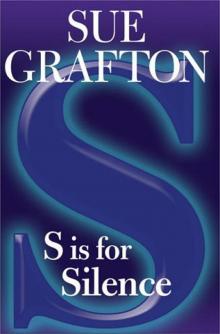 S Is for Silence
S Is for Silence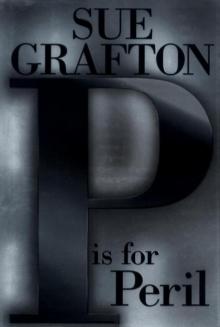 P Is for Peril
P Is for Peril R Is for Ricochet
R Is for Ricochet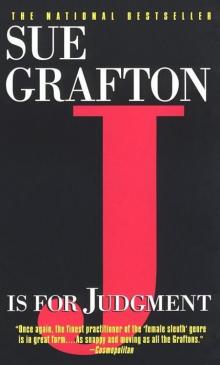 J Is for Judgment
J Is for Judgment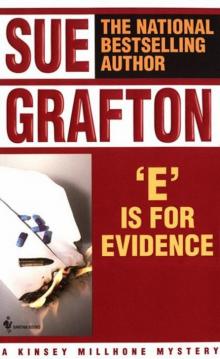 E Is for Evidence
E Is for Evidence T Is for Trespass
T Is for Trespass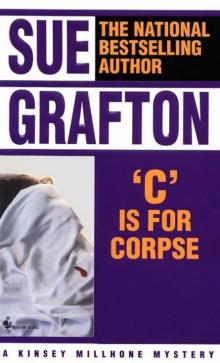 C Is for Corpse
C Is for Corpse U Is for Undertow
U Is for Undertow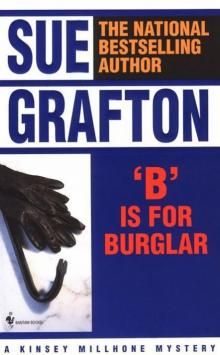 B Is for Burglar
B Is for Burglar Four Sue Grafton Novels
Four Sue Grafton Novels D Is for Deadbeat
D Is for Deadbeat K Is for Killer
K Is for Killer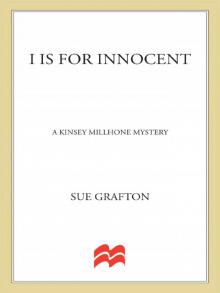 I Is for Innocent
I Is for Innocent A Is for Alibi
A Is for Alibi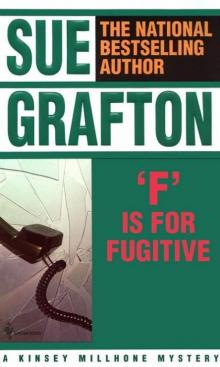 F Is for Fugitive
F Is for Fugitive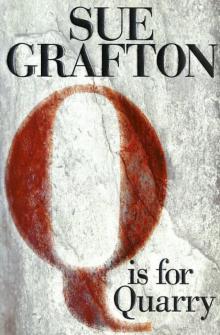 Q Is for Quarry
Q Is for Quarry W Is for Wasted
W Is for Wasted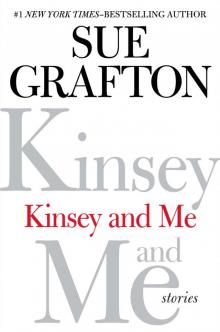 Kinsey and Me: Stories
Kinsey and Me: Stories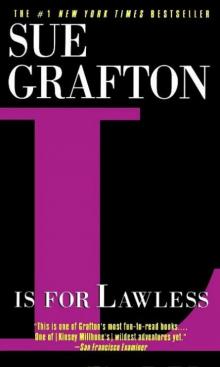 L Is for Lawless
L Is for Lawless Y Is for Yesterday
Y Is for Yesterday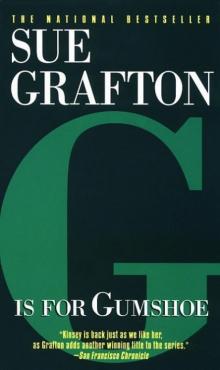 G Is for Gumshoe
G Is for Gumshoe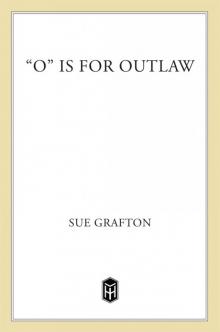 O Is for Outlaw
O Is for Outlaw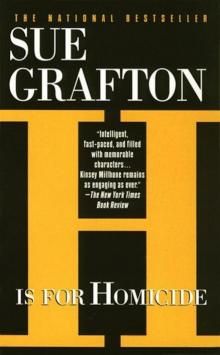 H Is for Homicide
H Is for Homicide X
X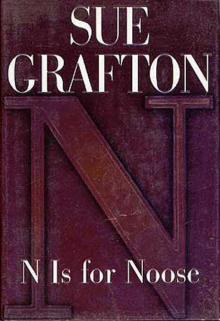 N Is for Noose
N Is for Noose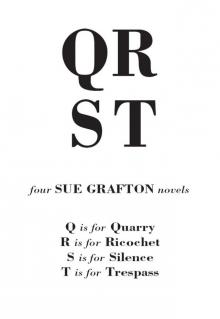 Three Complete Novels: A Is for Alibi / B Is for Burglar / C Is for Corpse
Three Complete Novels: A Is for Alibi / B Is for Burglar / C Is for Corpse M Is for Malice
M Is for Malice I is for INNOCENT
I is for INNOCENT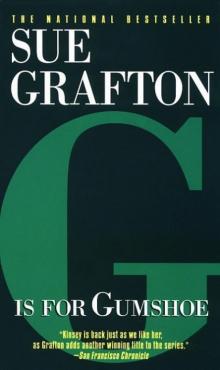 G is for GUMSHOE
G is for GUMSHOE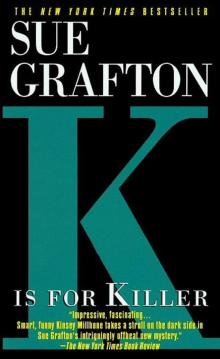 K is for KILLER
K is for KILLER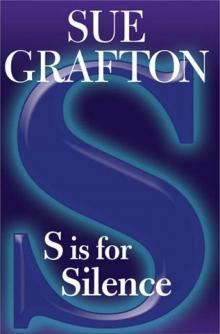 S is for SILENCE
S is for SILENCE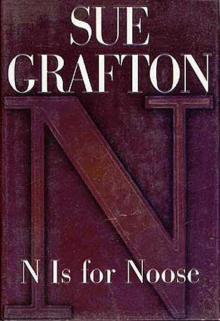 N is for NOOSE
N is for NOOSE D is for DEADBEAT
D is for DEADBEAT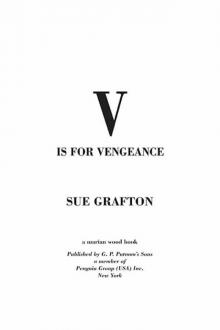 V is for Vengeance
V is for Vengeance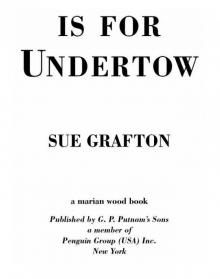 U is for Undertow
U is for Undertow W Is for Wasted km-23
W Is for Wasted km-23 O is for OUTLAW
O is for OUTLAW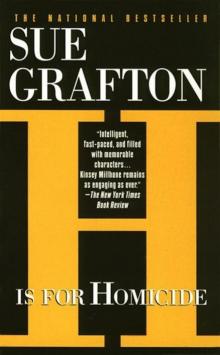 H is for HOMICIDE
H is for HOMICIDE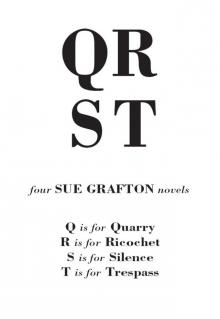 Sue Grafton Novel Collection
Sue Grafton Novel Collection Kinsey and Me
Kinsey and Me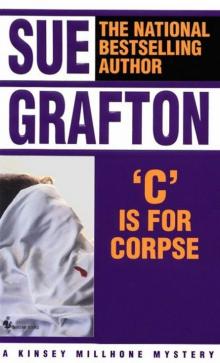 C is for CORPSE
C is for CORPSE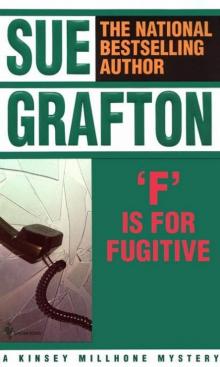 F is for FUGITIVE
F is for FUGITIVE B is for BURGLAR
B is for BURGLAR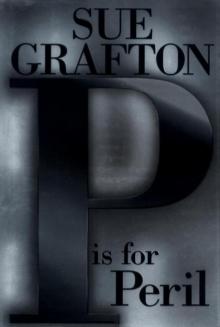 P is for PERIL
P is for PERIL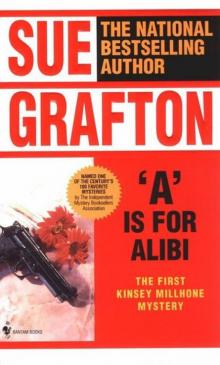 A is for ALIBI
A is for ALIBI E is for EVIDENCE
E is for EVIDENCE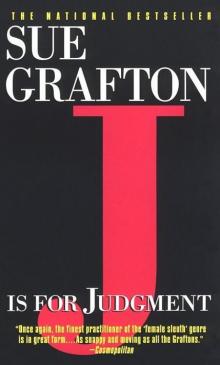 J is for JUDGMENT
J is for JUDGMENT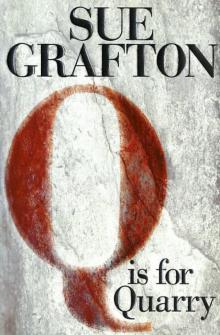 Q is for QUARRY
Q is for QUARRY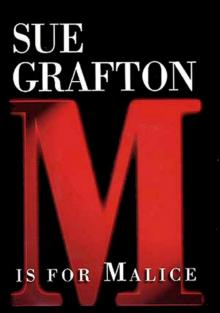 M is for MALICE
M is for MALICE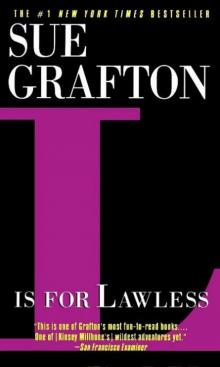 L is for LAWLESS
L is for LAWLESS